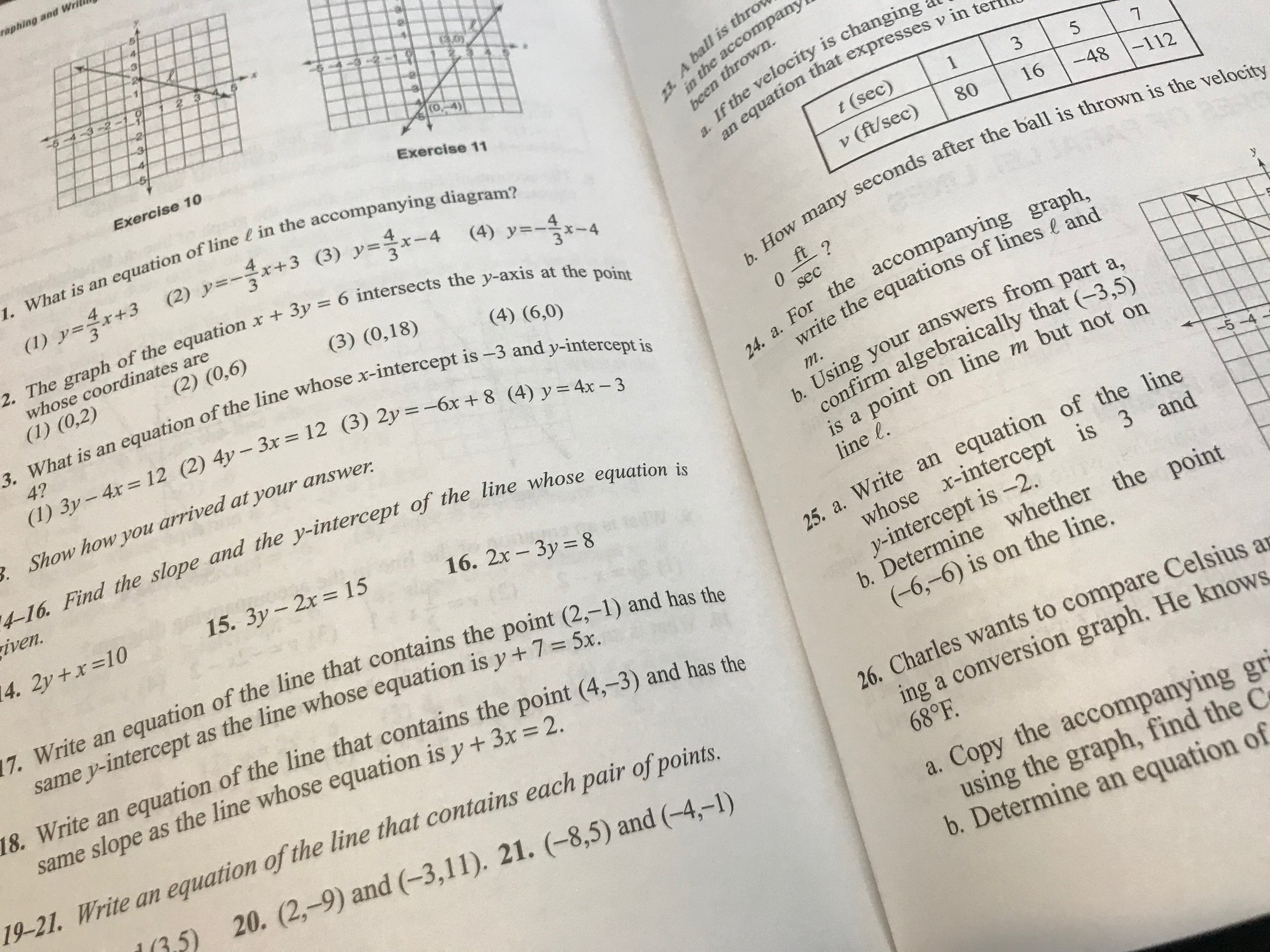Welcome back to the Ivy Lounge Test Prep™ series on the SAT/ACT math paradox and the math upgrades you need to beat it! In this series, I’m helping you brush up on the “simple” math skills that the SAT—tricky devil that it is—asks you to apply in complex ways. (Check out my first post in this series, an explainer on why you may not actually know all the math you think you do—it’ll help you understand what this post is trying to accomplish, and how it’s going help you grab math points you might otherwise miss!)
So now that you know that we’re here to upgrade your Baby Algebra so you can use it in the sophisticated ways the SAT (and, to a lesser extent, the ACT) demands…where to begin? I know exactly the place. This week, we’re kicking things off with the two simple Algebra upgrades that make the most difference of all. These primers pave the way for everything else I’ll teach afterward. So let’s dive in!
Baby Algebra Upgrade #1: Know what constitutes a linear equation in the first place.
You may remember that a line (or linear equation) is simply an equation where both y and x are raised to the first power. In other words, there is no y2 or x3 or sin(x) or 1/x. Just y and x, possibly multiplied by a number, and everything is a different term (i.e. added or subtracted together).
Here’s the most common form of a line:
y = mx + b
This way of representing the line is called “slope-intercept form,” where “m” is the slope and “b” is the y-intercept.
But these are also valid forms that a line can take:
y – y1 = m(x – x1)
This is “point-slope form,” where (x1, y1) is a point on the line and “m” is the slope.
Ax + By = C
This is “standard form,” where “A,” “B,” & “C” are constants, usually integers.
Notice: in all of these examples, x and y are never multiplied or divided together. They might be multiplied or divided by a number and then added or subtracted after that.
For example, these equations are NOT lines:
x/y = 14
2xy + x = 5
But these ARE:
y = 3x – 5
y + 1 = 2(x – 4)
4x – 3y = 9
So now that you know what makes a line to begin with, here’s the hack for what comes next:
If you need to find out the slope or the y-intercept, just take the equation they gave you and solve for y, putting the equation in the format y = mx + b!
Does a question ask you which line in the answer choices is parallel to (i.e. has the same slope as) the linear equation given? Just solve it for y and the slope you need will appear next to the x!
Need to know where the equation will cross the y-axis on the coordinate plane? Just solve it for y and you’ll see your y-intercept as the random number that's being added or subtracted and is NOT multiplied by x.
Et voilà….your first Baby Algebra upgrade!
Knowing what you’re looking at and how to work with it is the foundation for all of the upgrades we’re doing in this series. So if you’re still a little fuzzy on the concept, take a moment to go back and reread. If you’re feeling good about your understanding of the topic, give yourself a high five, and meet me at the next item below!
Baby Algebra Upgrade #2: Understand the real-world interpretations of a line.
This is my favorite, because it often knocks people’s socks off.
Say the SAT throws this scenario your way. The wind speed (s) in miles per hour on a mountain relates to the height above sea level (h) in feet with the equation:
s = 3h + 10
What does the 10 signify? What about the 3?
If you’re like most of my students, you’d say, “Well, the 10 is the y-intercept and the 3 is the slope!”
To which I’d say, “Okay, but what does that mean?” and get…confused silence.
But it’s actually really useful to understand what we’re talking about in the real world when we’re talking about linear equations. So I’ve made a couple “mad libs” to help you out in a real-world linear equation scenario:
Y-Intercept:
“Even if my ____ (x) were 0, my ____ (y) would still be ____ (y-intercept).”
In this case:
“Even if my height above sea level were 0, my wind speed would still be 10.”
Slope:
“For every ____ (unit of x), my ____ (y) increases/decreases by ____ (m).”
In this example:
“For every foot above sea level, my wind speed increases by 3.”
Make sense?
And I’ve got some good news for you: the SAT always asks these questions, usually in pretty much this same way. That’s right—they’ll actually test whether you know what the numbers in a linear equation refer to. Good thing you’ve now got that knowledge at the ready!
You’re welcome. ;)
So we’ve now given you the basic toolbox you need to upgrade your skills with linear equations.
These are just the first two steps on the path of upgrading your simple Algebra skills, but I felt they were so pertinent that even sharing these small spoonfuls with you would be useful. If you need the depth and individuality that I can only offer if we’re working one on one, though, you can reach out to me here.
In a future post, I’ll be showing you what you can do with this upgraded foundation…so stay tuned!




